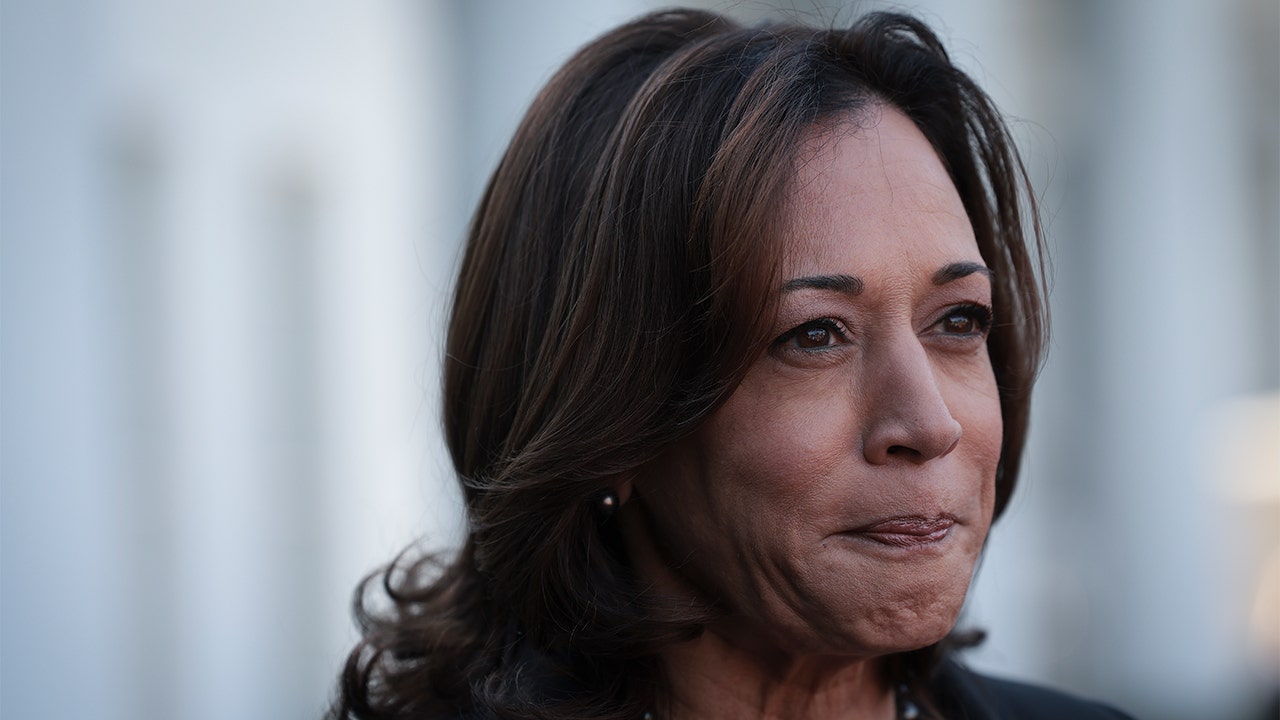Entertainment
Françoise Gilot, French painter who inspired then left Picasso, dead at 101
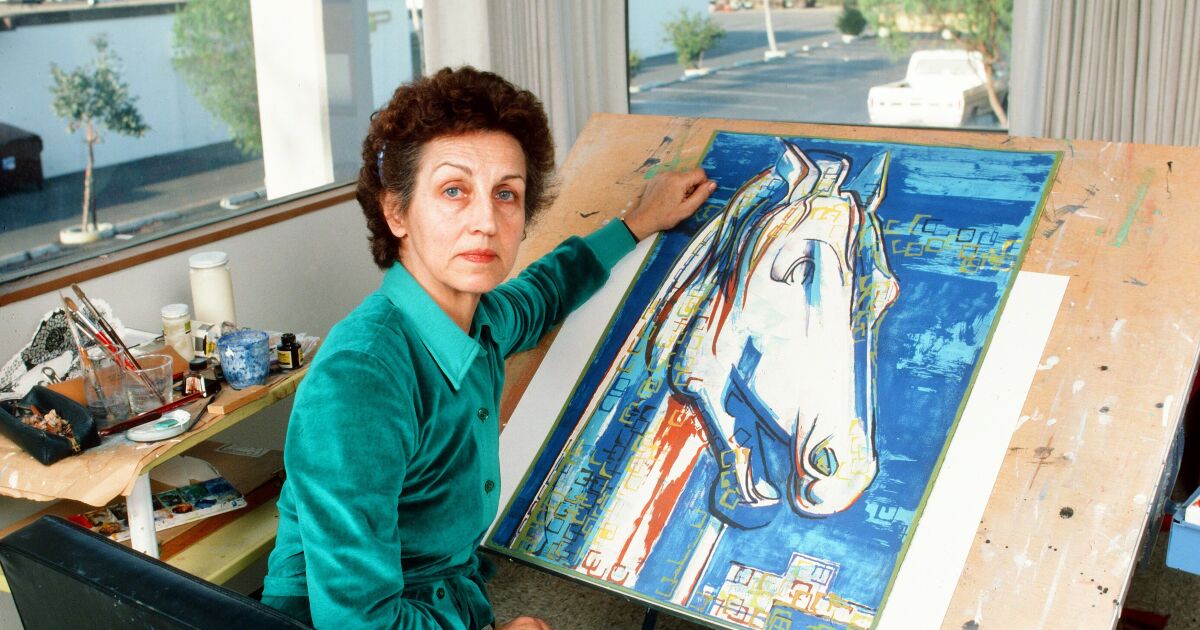
Françoise Gilot, a prolific and acclaimed painter who produced art for more than a half-century but was nonetheless more famous for her turbulent relationship with Pablo Picasso — and for leaving him — died Tuesday in New York City, where she had lived for decades. She was 101.
Gilot’s daughter, Aurelia Engel, said her mother had been suffering from both lung and heart problems. “She was an extremely talented artist, and we will be working on her legacy and the incredible paintings and works she is leaving us with,” Engel said.
The French-born Gilot had long made her frustration clear that despite acclaim for her art, which she produced from her teenage years until five years ago, she would still be best known for her relationship with the older and more famous Picasso, whom she met in 1943 at age 21, his junior by four decades.
The union produced two children — Claude and Paloma Picasso. But unlike the other key women in Picasso’s life — wives or paramours — Gilot eventually walked out.
“He never saw it coming,” Engel said of her mother’s departure. “She was there because she loved him and because she really believed in that incredible passion of art which they both shared. (But) she came as a free, though very, very young, but very independent person.”
Gilot herself told the Guardian newspaper in 2016 that “I was not a prisoner” in the relationship.
“I’d been there of my own will, and I left of my own will,” she said, then 94. “That’s what I told him once, before I left. I said: ‘Watch out, because I came when I wanted to, but I will leave when I want.’ He said, ‘Nobody leaves a man like me.’ I said, ‘We’ll see.’ ”
Gilot wrote several books, the most famous of which was “Life With Picasso,” written in 1964 with Carlton Lake. An angry Picasso sought unsuccessfully to ban its publication.
“He attacked her in court, and he lost three times,” said Engel. “After the third loss he called her and said congratulations. He fought it, but at the same time, I think he was proud to have been with a woman who had such guts like he had.”
Born on Nov. 26, 1921, in leafy Neuilly-sur-Seine in suburban Paris, Gilot was an only child. “She knew at the age of 5 that she wanted to be a painter,” Engel said. In accordance with her parents’ wishes, she studied law, however, while maintaining art as her true passion. She first exhibited her paintings in 1943.
Pablo Picasso with Francoise Gilot at Cannes Film Festival in 1953
(Associated Press)
That was the year she met Picasso, by chance, when she and a friend visited a restaurant on the Left Bank, amid a gathering that included his then-companion, Dora Maar.
“I was 21 and I felt that painting was already my whole life,” she wrote in “Life With Picasso.” When Picasso asked Gilot and her friend what they did, the friend responded that they were painters, to which Picasso responded, “That’s the funniest thing I’ve heard all day. Girls who look like that can’t be painters.” The two were invited to visit Picasso in his studio, and the relationship soon began.
Not long after leaving Picasso in 1953, Gilot reunited with a former friend, artist Luc Simon, and married him in 1955. The had a daughter — Engel — and divorced in 1962. In 1970, Gilot married Jonas Salk, the American virologist and researcher famed for his work with the polio vaccine, and began living between San Diego and Paris, and later New York.
Her art only increased in value over the years. In 2021 her “Paloma à la Guitare” (1965) sold for $1.3 million at a Sotheby’s auction. Her work has been shown in many prominent museums, including the Metropolitan Museum of Art and the Museum of Modern Art. Her life with Picasso was illustrated in the 1996 movie “Surviving Picasso,” directed by James Ivory.
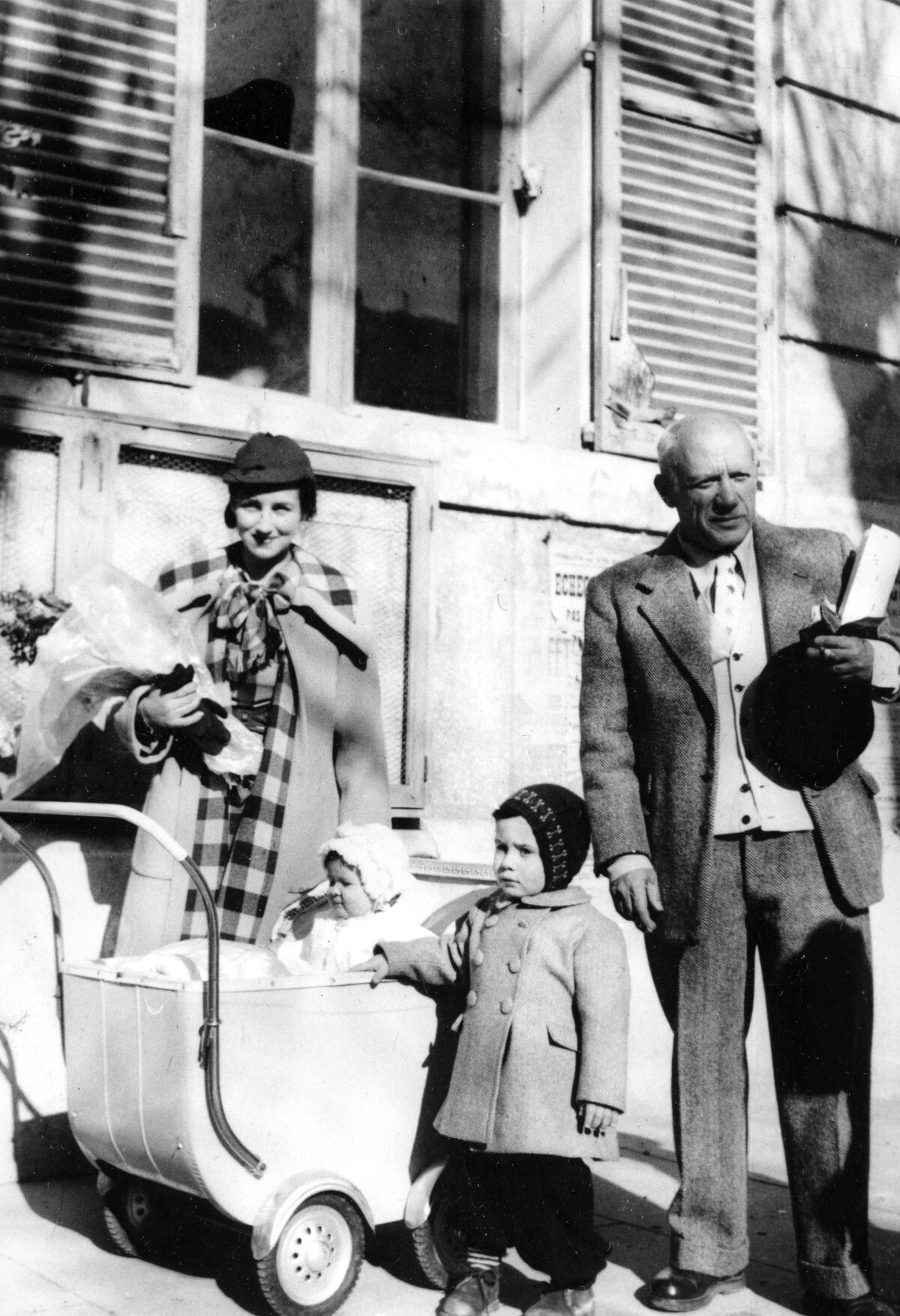
Pablo Picasso with Françoise Gilot and their child Claude.
(ASSOCIATED PRESS)
Engel noted that although the relationship with Picasso was clearly a difficult one, it gave her mother a certain freedom from her parents and the constraints of a bourgeois life — and perhaps enabled her to pursue her true dream of being a professional painter, a passion she shared with Picasso above all else.
“They both believed that art was the only thing in life worth doing,” she said. “And she was able to be her true self, even though it was not an easy life with him. But still she was able to be her true self.”
And for Engel, her mother’s key legacy was not only her creativity but her courage, which was reflected in her art, which was always changing, never staying safe.
“She was not without fear. But she would always confront her fears and jump in the void and take risks, no matter what,” Engel said.

Entertainment
Casting directors from Anne Hathaway films deny 'gross' chemistry tests during auditions
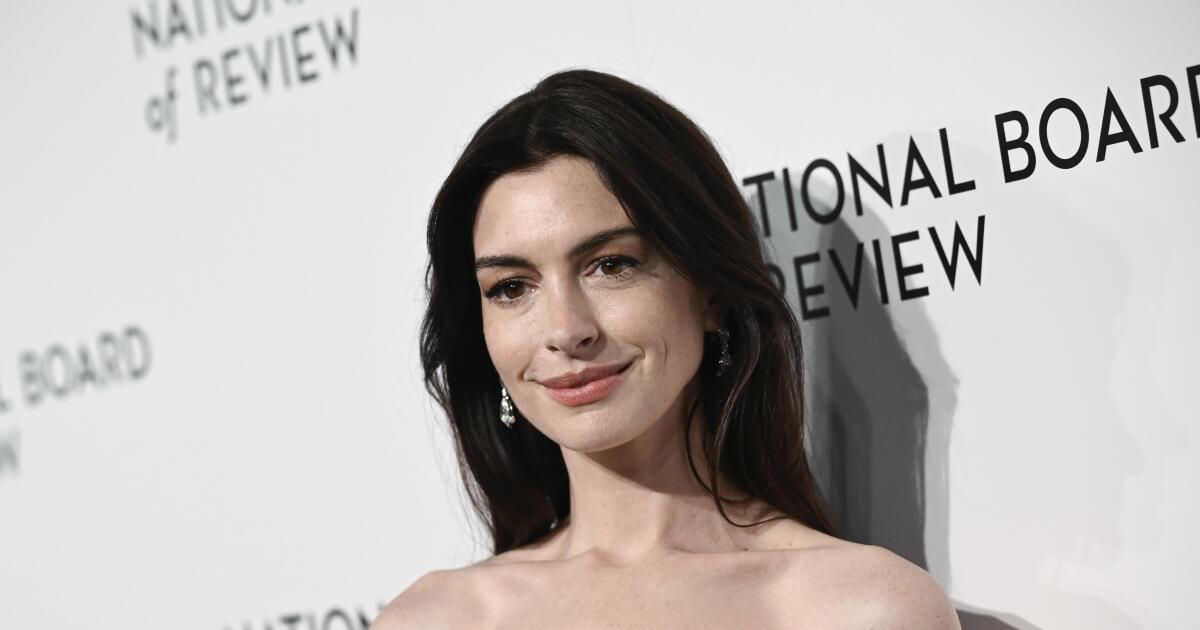
A recent bombshell from Anne Hathaway may not have the detonation radius some people think.
In a V Magazine story published Monday, the “Devil Wears Prada” alum said she was regularly asked to participate in uncomfortable chemistry tests while auditioning for roles in the 2000s.
“It was considered normal to ask an actor to make out with other actors to test for chemistry, which is actually the worst way to do it,” Hathaway said. “I was told, ‘We have ten guys coming today and you’re cast. Aren’t you excited to make out with all of them?’ And I thought, ‘Is there something wrong with me?’ because I wasn’t excited. I thought it sounded gross.”
She added, “It wasn’t a power play, no one was trying to be awful or hurt me. It was just a very different time and now we know better.”
While Hathaway did not call out anyone by name, at least one casting director who worked with her during that time has denied such tests were conducted on their set.
“I certainly was not a part of any audition that required her to make out, or anyone else to, and it was not something done at Disney and Touchstone for the 15 years I was a casting executive in feature films, as far as I am aware of,” Donna Morong, casting director for “The Princess Diaries” — which was released in 2001 and may see a third installment soon — said in a statement to The Times.
“I have no reason to believe that Anne Hathaway would lie about experiencing that in other casting offices but it seems like a crazy way to measure whether two people have ‘chemistry,’ completely ineffective and I would agree, ‘gross,’” Morong continued. “As Anne said in her article in ‘V,’ she loved working with Garry Marshall and never referenced making out with multiple actors during the casting of ‘Princess Diaries.’”
“Brokeback Mountain” casting director Avy Kaufman told TMZ she has no recollection of anything similar to what Hathaway detailed in her cover story. She told The Times on Wednesday that she didn’t have “any good stories” to share.
TMZ also reported that Linda Lamontagne, who helped cast Hathaway in the 1999-2000 series “Get Real,” denied overseeing any chemistry read matching the actor’s description.
“I’ve worked in casting since ‘Capital News’ in 1988, and, in all honesty, never had to have actors make out with any other actor for any auditions nor chemistry tests,” Lamontagne told the outlet, adding that while she doesn’t deny Hathaway had such an experience, she was never at the helm of it.
“It’s hard enough to audition for something that is new, or even established and we don’t want to make a talent uncomfortable. It’s enough pressure as it is,” she said.
Lamontagne didn’t reply immediately to The Times’ request for comment.
As a producer on her upcoming film “The Idea of You,” which premiered March 16 at South by Southwest and drops May 2 on Prime Video, Hathaway was able to concoct a chemistry test of her own, which she related to V Magazine.
During auditions for the film, actors were asked to choose a song they felt their character would love and to play it in a bid to get Hathaway’s character, single mother Solène Marchand, to dance.
Nicholas Galitzine — whose previous credits include “Red, White & Royal Blue” and “Bottoms” — won her over with an Alabama Shakes tune, Hathaway said.
“I was sitting in a chair like we had come in from dinner or a walk or something, we pressed play, and we just started dancing together. … Nobody was showing off,” she continued. “Nobody was trying to get the gig. We were just in a space dancing. I looked over and Michael Showalter, our director, was beaming. Spark!”
Movie Reviews
Humane (2024) – Movie Review
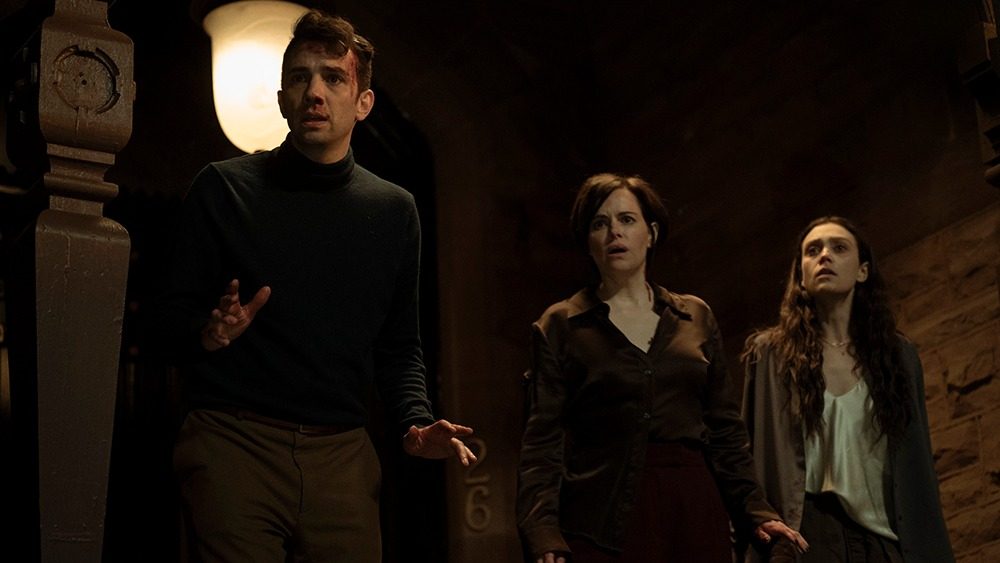
Humane, 2024.
Directed by Caitlin Cronenberg.
Starring Jay Baruchel, Emily Hampshire, Peter Gallagher, Enrico Colantoni, Sebastian Chacon, Alanna Bale, Sirena Gulamgaus, Uni Park, Martin Roach, Blessing Adedijo, Joel Gagne, and Franckie Francois.
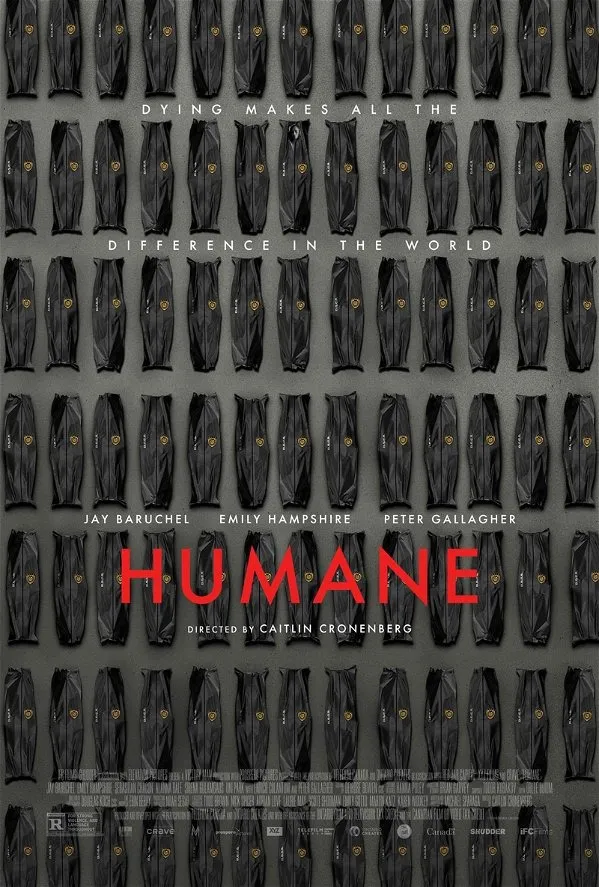
SYNOPSIS:
In the wake of an environmental collapse that is forcing humanity to shed 20% of its population, a family dinner erupts into chaos when a father’s plan to enlist in the government’s new euthanasia program goes horribly awry.
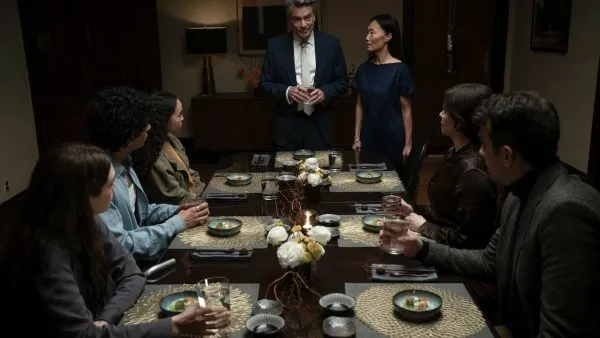
Humane takes a darkly fascinating, timely concept regarding ecological collapse and overpopulation, competently establishes some of that world-building that’s not too far off from a potentially bleak future reality, and then devolves into an hour of filthy rich siblings, most of whom are unlikeable, shouting at each other in an attempt to decide who they are going to sacrifice as part of an ongoing government-funded euthanasia cleansing.
There is also nothing wrong with these characters being offputting and morally bankrupt when a sudden gathering organized by patriarch Charles York (Peter Gallagher) turns into an evening of survival, especially when there are military personnel and individuals even more psychotic overseeing the euthanasia process (a procedure with rewards that seemingly sets up the rest of one’s family financially for life), but the script from Michael Sparaga lacks characterization and complexity beyond one or two defining traits for each sibling. As a result, much of the backstabbing and betrayal between two particular siblings strains credibility and comes across as the screenplay looking to stretch the physical family feud long past its repetitive breaking point.
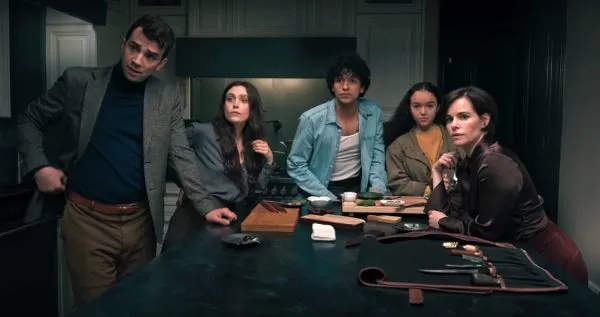
This is frustrating since, again, the hook grabs attention. Charles is a former celebrated news reporter who financially benefited from years of society ignoring climate change, among other pressing issues. Somewhat of a failure as a parent and husband, currently with a new partner named Dawn Kim (Uni Park), who has faced racism at extreme lengths of having her restaurant burned down (the script also mentions that for whatever reason, Asians, in general, have been made public enemy number one for the current disastrous state of the planet, without ever really expanding on that.) Charles cares deeply about his legacy. He is also looking for some form of redemption, so he signs himself and Dawn up for the euthanasia process while inviting his four adult children (one adopted son) over to say goodbye without explaining what the reunion is about.
The children are Jared’s (Jay Baruchel) government mouthpiece for the euthanasia program, Rachel’s (Emily Hampshire) sociopathic businesswoman who doesn’t realize or seem to care that her heartlessness gets her daughter Mia (Sirena Gulamgaus) endlessly bullied at school, recovering junkie and adopted son Noah (Sebastian Chacon) and aspiring actress Ashley (Alanna Bale.) Due to not knowing the nature of this reunion, Mia also ends up in the house. It is also established that Noah and Ashley are closer to one another than everyone else in this dysfunctional family.
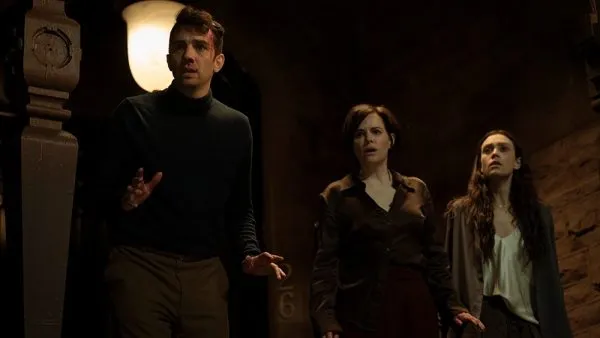
Following dinner, Charles blurts out what is happening here; the euthanasia enforcements arrive, insisting that the family figure out a way to provide a second body since Dawn had run off before they arrived. Whether there is a deeper significance to that remains a mystery. There is no backing out, and the menacing ringleader, Bob (Enrico Colantoni), scrambles the Wi-Fi and is certain that these people are so selfish they will try to kill each other to ensure they are not the second death. He also makes clear that this group does not euthanize children (although the slimy Jared is seen on television early on promoting the idea, admitting that he would allow his teenage son to consider it), ordering his armed guards to bring Mia outside and into his van as insurance while the family decides what to do.
The euthanasia process is unsettlingly creepy, as fully seen during an opening prologue juxtaposed with an upbeat, cheerful song choice. The film consistently finds pockets to quickly drop tiny bits of information about this world and how the service is handled in the public eye, including gallows humor commercials thanking regular citizens for their suicide contributions.
That’s all one way of saying Humane has the ingredients to be a sharp and socially aware takedown of the rich and a reflection of a grim, possible reality if everyone on this planet doesn’t get on the same page to do something about devastating global concerns. However, the film takes that intrigue and squanders it all on a sibling match of who can yell the loudest and survive the most injuries. Characters repeatedly try to kill each other, form alliances, betray one another, and show their worst sides in ways that don’t always feel believable, even for these wealthy, self-centered assholes. It becomes exhausting, and at one point, we side with the gleeful euthanizing murderer for trying to convince Mia that her mom is an awful person. Hilariously, it also tries to give that character a dramatic backstory while dropping the psychopathic behavior for roughly two minutes.
What Humane does have going for it is that it is the debut from Caitlin Cronenberg, and while this is a different kind of horror from what her father and brother would craft (and sometimes a black comedy with Jay Baruchel eliciting some laughs), the violence still has some body horror that fits right in with the family portfolio. Fingers are forced inside stab wounds, and blood squirts so often that it becomes confounding no one is dead yet. As a director, there should be interest in what she does next, preferably something with a stronger screenplay and layered characters.
Flickering Myth Rating – Film: ★ ★ / Movie: ★ ★
Robert Kojder is a member of the Chicago Film Critics Association and the Critics Choice Association. He is also the Flickering Myth Reviews Editor. Check here for new reviews, follow my Twitter or Letterboxd, or email me at MetalGearSolid719@gmail.com
https://www.youtube.com/watch?v=embed/playlist
Entertainment
Christina Applegate contracts virus after eating food contaminated with fecal matter
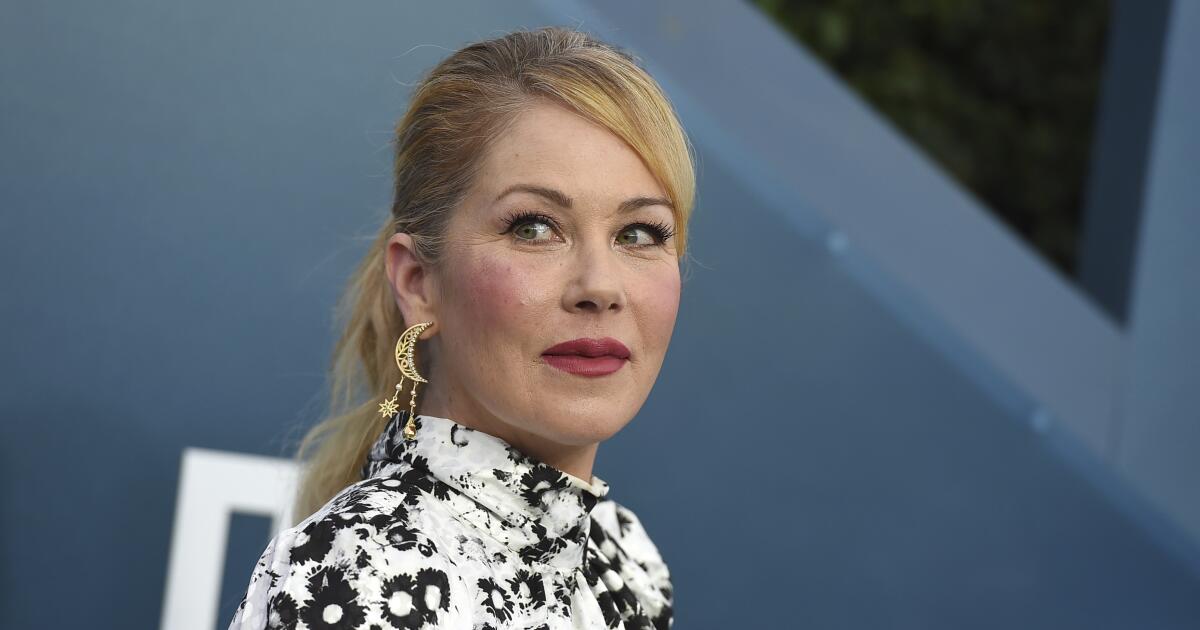
Christina Applegate was still recovering from her first run-in with COVID-19 when another virus recently had her health in the toilet again.
The “Dead to Me” star spoke humorously — and graphically — about her “gross” experience with a sapovirus infection in the sixth episode of “MesSy,” the multiple sclerosis-themed podcast she shares with actor Jamie-Lynn Sigler.
“It’s now time for the poop talk,” Sigler introduced the segment.
“It’s a poop pod,” Applegate said. “If you don’t like this part, totally fine. I get it.”
It started with dizzy spells and a bout of uncontrollable diarrhea.
“I couldn’t eat. I couldn’t anything,” Applegate said, so she took a stool test. “You poop into a receptacle, and then you have to scoop your own poop into vials. And it was so gross, I started vomiting whilst doing this.”
The test told her she had contracted sapovirus, which occurs when one person ingests another’s fecal matter, most often via contaminated food. According to the National Institutes of Health, “Sapovirus infections are responsible for both sporadic cases and occasional outbreaks of acute gastroenteritis.”
The culprit, Applegate said, was most likely a takeout salad from a vegan restaurant she’s visited for years and declined to name.
“They say that it’s mostly from salads because cooked food kind of kills the bacteria,” she said. “Someone else’s poop went into my mouth, and I ate it.”
As if the virus wasn’t bad enough, Applegate said it exacerbated the symptoms of her multiple sclerosis, with which she was diagnosed in 2021. According to Johns Hopkins Medicine, the chronic illness can cause trouble walking, difficulty with balance and fatigue.
“I woke up at 3 o’clock in the morning in a pool of s—,” she said. “Having MS at 3 o’clock in the morning and trying to change your sheets, it’s not fun.”
She and Sigler then joked about their qualms with adult diapers, which Applegate said she had recently been wearing again out of convenience. Their suggestions included adding Velcro and scrapping the “pretty” designs.
“I think it would be very nice if you could give me an adult diaper that fully supported my mood when I looked at it,” Sigler said, “which would be something along the lines of the words, ‘F— me’ across my pelvis.”
“Again, we’re losing a patent. Someone’s going to do this and make millions,” Applegate riffed.
The Emmy-winning actor has spoken about her experience with MS before, including on “MesSy.”
During the podcast’s third episode, she revealed she was in a relapse at the time of recording, detailing “intense pain” in her legs and discomfort in her eye.
“I couldn’t sleep because every time I would close my eye, my eye would start doing some crazy s—,” she said, adding that damage to the optic nerve can be a symptom of MS.
During a March appearance on “Good Morning America,” Applegate said she suspects she had MS symptoms for several years before her diagnosis.
“I noticed, especially the first season [of “Dead to Me”], we’d be shooting and my leg would buckle,” she said. “I really just put it off as being tired, or I’m dehydrated, or it’s the weather. Then nothing would happen for months, and I didn’t pay attention.”
By the time she was filming the TV series’ third season, she was being brought to set in a wheelchair and sometimes had crew members holding up her legs out of camera range.
Even now, she said, she struggles to accept her diagnosis or explain it to others.
“I live kind of in hell,” she said. “But of course, the support is wonderful, and I’m really grateful.”
Applegate received a standing ovation when she walked onstage to present an award at the Emmys in January. A few months earlier, her former “Married … With Children” co-star Katey Sagal physically supported Applegate as she received her star on the Hollywood Walk of Fame.
During her speech, Applegate recalled how, as a child, she would read the names on the stars along Hollywood Boulevard, wondering how she could get hers among them.
“So this day means more to me than you can possibly imagine,” she said.
-
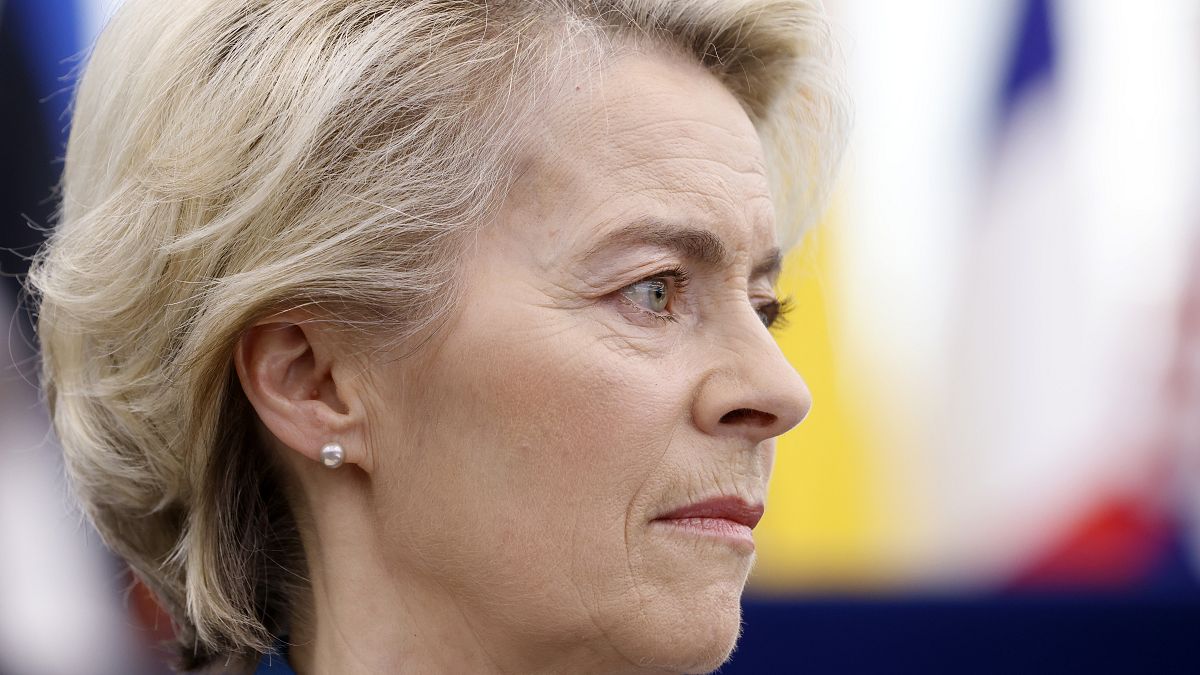
 World7 days ago
World7 days agoIf not Ursula, then who? Seven in the wings for Commission top job
-
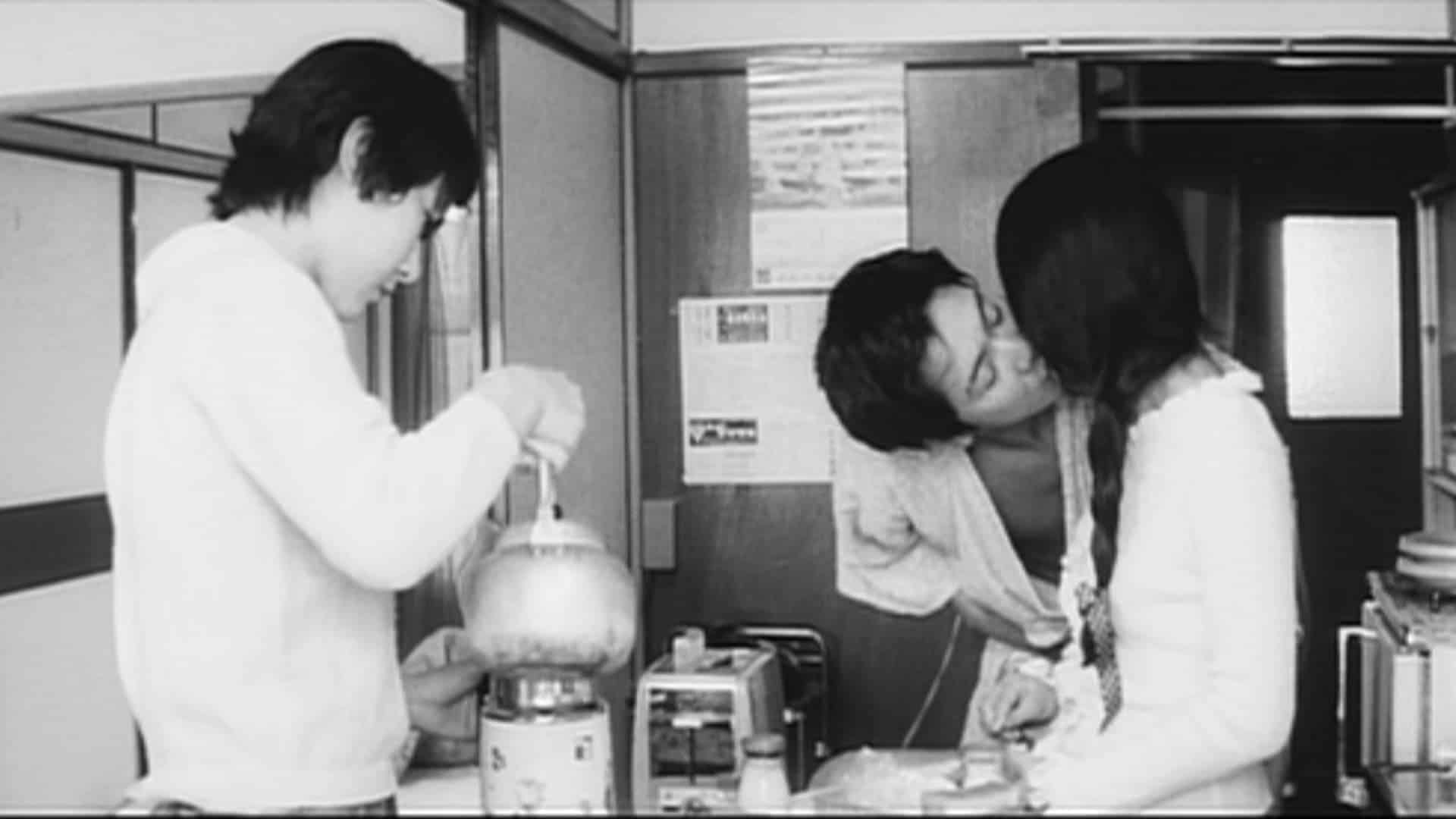
 Movie Reviews1 week ago
Movie Reviews1 week agoFilm Review: Season of Terror (1969) by Koji Wakamatsu
-

 Politics1 week ago
Politics1 week agoNine questions about the Trump trial, answered
-

 World1 week ago
World1 week agoHungary won't rule out using veto during EU Council presidency
-

 World1 week ago
World1 week agoCroatians vote in election pitting the PM against the country’s president
-

 News1 week ago
News1 week agoGOP senators demand full trial in Mayorkas impeachment
-

 Politics7 days ago
Politics7 days agoTrump trial: Jury selection to resume in New York City for 3rd day in former president's trial
-

 World1 week ago
World1 week agoThe Take: How Iran’s attack on Israel unfolded
